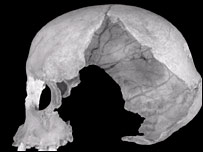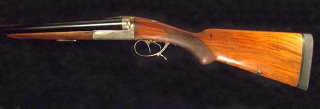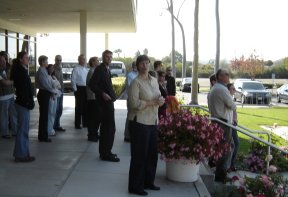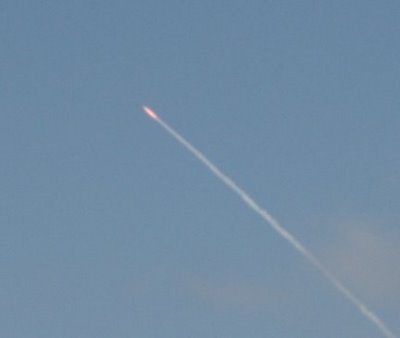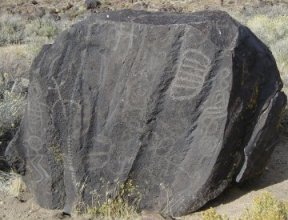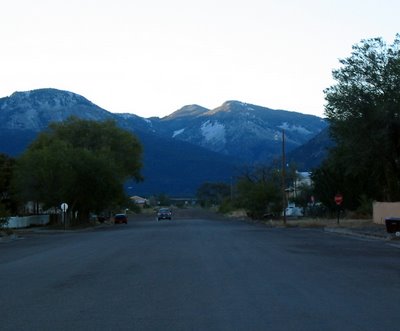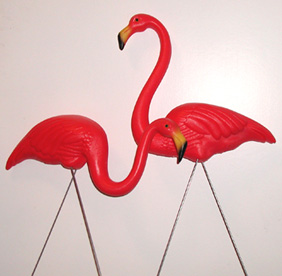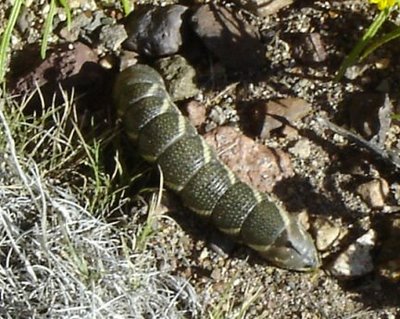This is in response to
Darren's excellent post on dog origins that Reid comments on below-- you might read it first. Some commentors insist on the conventional " dog = wolf " formula Darren casts doubt upon, but I think the evidence is with Darren.
I have a friend named Vladimir Beregovoy, a retired Russian zoologist in Virginia, who has made a lifelong study of "primitive" breeds. He has even written a book on them: 'Primitive Breeds- Perfect Dogs'.(
Here is a link to his book on laikas). He doesn’t speculate much on origins, but several things are clear. While they share a bunch of traits that seem superficially more 'wolflike' than more 'derived' breeds-- less obedient, more pack oriented, single annual estrous, more likely to howl and yodel than bark a lot, den- digging-- they still fall strongly on the dog rather than wolf side of the divide behaviorally, still have more neotenic skulls, up- curled tails, still watch humans for cues and want to please-- the whole suite of things Darren mentioned, and more. They do NOT revert to wolf but to pariah (or in the north 'laika' types with more coat-- quite naturally).*
Never mentioned in the 'dogs are wolves' view is the apparent antipathy between dog and wolf. Wolves invariably kill and eat dogs if they can. Coyotes will try to, (personal experience) until the dogs are large and can course and kill the coyote. I have seen the latter more than once. Matings in captivity have to be made carefully and work best with breeds that probably do have a few wolf genes, notably husky.

I have worked with wolves in a zoo, dogs, and primitive breeds. No question that the wolf is the behavioral outlier.
As we know, species hybrids are not that rare. Darren gave me examples recently, even of hybrids betwen genera-- also, are the saker and gyrfalcon one species or two?
That wolves are closer to dogs than coyotes is not in doubt-- coyotes originated in the New World, wolves in the old. Why does this invalidate the idea that dogs could be a separate (Old World) species more closely allied to wolves?
'Multiple origins' didn't cut it in humans and I predict won't in dogs. ALL have too many similarities. I do think that more derived dogs are more neotenic a la the Russian fox experiment (still going on I think).
Ray Coppinger knows a lot about behaviour-- brilliant there-- but I think much less about genetics and evolution.
The one point the first commenter made that was valid was that dogs did come to the New World with humans. But they didn't necessarily have to come with the FIRST, who might well have been west- coast marine hunters. They almost certainly came down the ice- free corridor with the humans who came 12,000 years ago. This timeline fits well with your scenario. (And of course these humans came from 'first- dog' Asia).
I don't think Christy Turner has published officially yet. He has a rather far- fetched theory that dogs protected humans from large hyenas, but he is an anthropologist, not a zoologist. Still, he
recently found a 14,000 year- old dog tooth in the Altai.
Dogs aren't wolves.
* 'Oriental' sighthound breeds, like aboriginal Afghans, salukis, and my tazis, have the whole primitive suite of behaviors including single estrous. They form a natural clade from the Middle East to Mongolia and should probably be considered only one breed (if 'breed' has any validity whatsoever). They are virtually unrelated to such other coursing breeds as greyhounds, deerhounds etc which act much more'doggy'. Curiously, modern show selection etc-- probably for less feral behaviour-- has made the Kennel Club types more doggy, even changing their reproductive cycle to 'normal' dog two- heat. Mine still have only one-- thank God! Seven dogs are quite enough for now.
